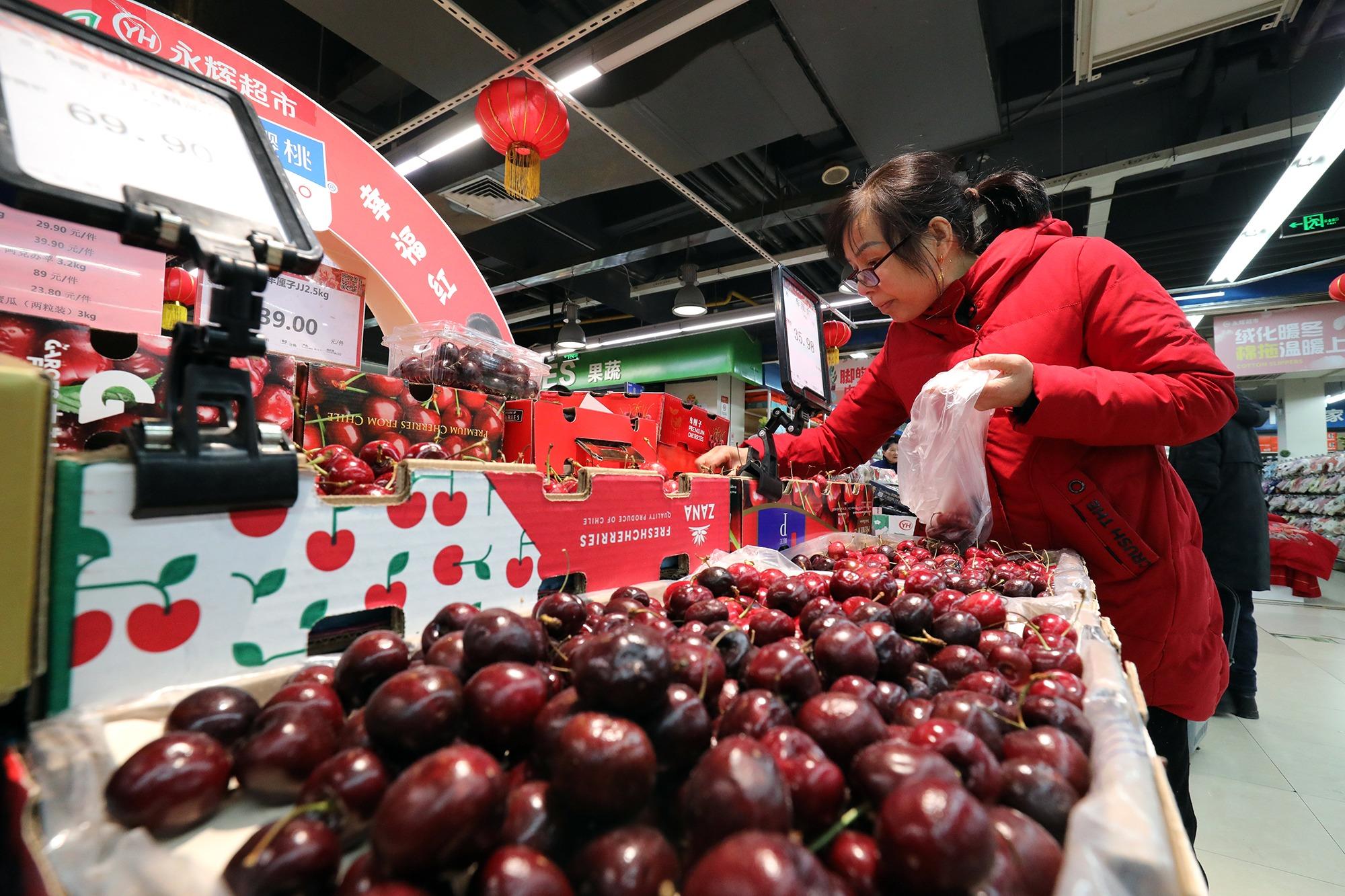 A consumer buys Chilean cherries at a supermarket in Chongqing. (SUN KAIFANG / FOR CHINA DAILY)
A consumer buys Chilean cherries at a supermarket in Chongqing. (SUN KAIFANG / FOR CHINA DAILY)
Fueled by China's soaring market demand and global advancements in cold chain logistics, Chile's cherry exports to the nation are projected to reach 92 percent of its total exports in this category during the 2023-24 season, up from 88 percent during the previous season, the country's top diplomat to China said.
There has been a significant increase in Chile's cherry exports to China in recent weeks, totaling 365,968 metric tons, compared to 362,607 tons in the 2022-23 season.
This trend is expected to continue leading up to the Chinese Lunar New Year, according to information released by the Chilean embassy in Beijing.
READ MORE: Trade corridor boosts RCEP regional economic integration
The cherry, a fruit that was not part of Chile's exports to China 15 years ago, has now become the second-most important product exported from Chile to the country, following copper ore, with over $2 billion in export value annually, said Mauricio Hurtado, Chile's ambassador to China.
Hurtado said: "The trade expansion in this field has not only benefited both countries economically but has also created opportunities for introducing new varieties and a wider range of products in the Chinese market," Hurtado said. "We are introducing peaches in China this year, marking the continuation of the cherry season. We will also export Coho salmon, a variety prevalent in Chile, to China.
"We are currently in a position to resume exporting poultry and chicken products to China. This comes after Chile was declared free of bird flu a few months ago, a significant development for our producers who are eager to restart trade as soon as possible."
Eager to boost its exports to China, the Agricultural and Livestock Service, a Chilean government branch, and Shanghai Customs began collaborating on a joint plan to expedite the entry of loads of Chilean fresh fruit into the ports of Shanghai last year.
READ MORE: Chile shows BRI’s reach
This effort specifically targets containers undergoing cold treatments during transit, in response to the implementation of phytosanitary measures designed to control fruit flies. This measure is particularly crucial for fruit originating from regions in Chile that sporadically face fruit fly outbreaks, said Shanghai Customs.
China's General Administration of Customs authorized the pilot plan for fresh cherries in November 2023. Subsequently, the first container with Chilean cherries adopting this modality successfully arrived in Shanghai on Jan 21.
This innovative approach allows for the online verification of the containers' complete location and calibration details.
Presently, it takes 28 days for a container vessel to transport cherries from Chile to ports in Shanghai.
Driven by the China-Chile Free Trade Agreement and the Belt and Road Initiative, Hurtado said that business ties between China and Chile will continue to grow this year, with notable diversification in areas such as technology cooperation and trade in services.
ALSO READ: Booming fruit trade enhances China-ASEAN cooperation
As China has found it difficult to grow all of the food it needs and has consequently formed closer ties with the global food market, demand for beef, mutton, pork, fruit, wine and dairy products will certainly offer many opportunities for major exporters of agricultural products, including Spain, Ireland, Chile, Argentina and the United States, said Ding Lixin, a researcher at the Chinese Academy of Agricultural Sciences in Beijing.
With the facilitation of e-commerce, foreign businesses now have the capability to connect with consumers across all regions of China, a feat that was unthinkable just a decade ago, he said.
China provided increased market access for imports of certain agricultural and food products from over 51 countries and regions in 2023, according to information released by the GAC.
The GAC signed 156 cooperation documents with foreign partners last year, including 84 documents on market access for agricultural and food products with other Belt and Road cooperation partners.


